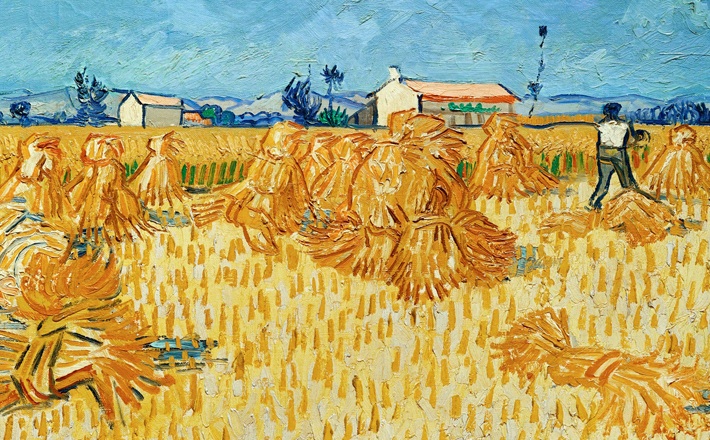Commentary on 2 Kings 5:1-14
At Arlington National Cemetery in Virginia there is a tomb of the Unknowns.
It commemorates American service members who have died without their remains being identified. The Unknowns were interred as recipients of the Congressional Medal of Honor. On the face of it, 2 Kings 5 is a story of a Syrian military leader but 2 Kings 5:1-14 critiques foreign imperialism. The powerful are satirized and the servants provide wise counsel. Jesus mentions this story when he preaches at the synagogue in Nazareth (Luke 4:27).
The story of the healing of Naaman occurs in three stages (2 Kings 5:1-4, 15-19, and 20-27). Our focus today is the first act. Each element is a self-contained narrative. Many scholars mention that the stories have three characters — Elisha, Naaman, and Gehazi — but that overlooks the unnamed, the unknowns but not silent slaves that bring the sole voice of theological reason to stories of imperial folly.
The writer effectively describes the powerful Naaman from Arameans Empire. Naaman, a rarely used name in Hebrew means “fair” or “gracious” (Genesis 46:21; Numbers 26:40; 1 Chronicles 8:4,7) where it refers to a member of the tribe of Benjamin. However, the Syrian may mean something else. This Naaman is a commander of the army of the king of Aram (modern day Syria) and a “great man” from the perception of the King of Aram. When this story is taken into the Septuagint the place name is given as Syria. The Luke passage follows the Septuagint (Luke 4:27). The NRSV reads “in high favor” renders a Hebrew expression of “lift up the face.” The term refers to pleasure and affection that brings about an upturned facial expression (See also Isaiah 3:3, 9-14; Job 22:8).
The honorific designations in the early part of the first verse are based on a result based on a particular act, the victory of Aram. The writer uses a ki as an indicator of result. The writer testifies to the sovereignty of God. The high status of Naaman depended on the victory that God had given him. Even though Naaman likely would not have perceived the victory as the result of divine activity, if by that we mean divine activity by the God of Israel. However, the prophets as well as Kings assert that even the successes of non-Israelites find their origins in the God of Israel (See Isaiah 10:13; Amos 9:7).
Even the great man Naaman has a boss. In a world of patron client honor shame community even the great man has constraints. Naaman’s constraint is his disease or disability. Hebrew laws (Leviticus 13-14) about skin disease often lumped together under the title leprosy designated persons with this contagious disease as unclean. They were relegated to the fringe of society. These same social practices show up in the New Testament as well. Skin disease stands between Naaman and full honor. The writer accents the passive voice the healing of the skin disease in order to demonstrate that even this paragon of power is laid low by the skin disease. The writer displays a revered and vulnerable hero.
The first sentence states the status of Naaman, describes his honor and wealth of Aram but ignores the Aramean war machine. The Aramean military expansion meant raids in Israel. The captives were deported from the land of Israel, among them a little girl. This little girl joins a chorus of unnamed women in the Hebrew Bible. The contrast of power flavors the very beginning of the story. But notice that Naaman is not his own man as they say. He has a patron in the king of Aram. Her patron, the man of God, Elisha would take away the skin disease. The young slave girl shares her faith with the mistress of the house who then talks with Naaman.
The theme of power and status continues. Naaman goes first to his patron the king of Aram. The king of Aram sends his man to the king of Israel. The king of Aram sends an entourage with a letter, silver, gold, and garments to the King of Samaria. The king of Israel demurs. He asks “do you think me god that I could heal a skin disease?” This reminds one of the magi who go to Herod to find the king of the Jews (Matthew 2). The elites can get so lost in a world of their own construction that they miss the theological solution. The Aramean’s can orchestrate raiding parties that bring back slaves but they cannot cure skin disease.
The king of Israel tore his clothes in a sign of anguish (2 Kings 5:7). When this came to the attention of Elisha he sent word to the king telling the king that he should send Naaman to him. He reminds the king of Israel that this is an opportunity to demonstrate to Naaman to recognize “that there is a prophet in Israel.” But when Naaman came to the house of Elisha, Naaman brought with him the trappings of power and wealth. But even that could not get Elisha “to come out and play.” Elisha sent a messenger with instructions to go and wash seven times and your skin disease will be taken away. These instructions angers Naaman. His sense of status and protocol was offended. He thought that the prophet would personally come out, maybe wave a hand and heal him in the name of his God. Instead all he received were instructions to bathe in what he considered the puny River Jordan. He fumes to himself that Syria/Aram has the impressive Abana and Pharphar Rivers. Naaman turns and goes away in a rage (v 12).
What the slave girl began (v 3) now Naaman’s slaves enable (v 13), as they calm him by using familial language of “father”. They say in essence “you would have accomplished a difficult task; why do you balk at such an easy assignment?” Naaman heeds the instructions of the prophet and the slaves. He is healed by Elisha and the unknowns.


July 3, 2016